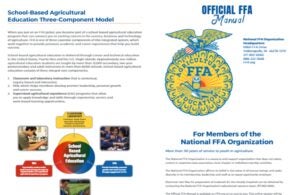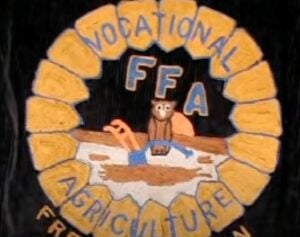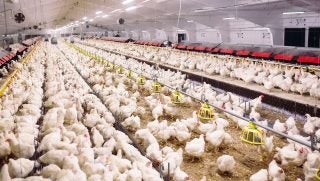Each year, the National FFA Organization updates the Official FFA Manual. The manual serves as a guide for FFA members, chock full of things that members need to know about the organizational from cover to cover.
I remember my first Official FFA manual, handed out in our Intro to Agriculture class by our advisor. We carved through the book with a fast-paced scavenger hunt, getting our first introduction to an organization that has stood the test of time and played such a significant role in so many of our lives.
The first FFA Manual was a 1929-30 version mimeographed, then later published as as pamphlet. At the time, the national organization had just had its official birth on January 15, 1930, only 14 months before the manual’s publication. Thirty-five states and Hawaii (a U.S. territory at the time) had formed state associations with the Future Farmers of America consisting of 30,000 members and 1,800 local chapters.

Members might be surprised to find some of the stark differentiations in the first manual published when compared to today’s version. Here are a few highlights that we were surprised by.
At the time, any student of vocational agriculture, who was enrolled in a part-time, day-unit, or all-day class was entitled to active membership in the FFA according to the manual. However, many other references in the original manual refer strictly to boys. The language, “any student” was updated in the future with further gender differentiation in the first FFA constitution.
“Designed to recognize the natural instincts and tendencies of boys to organize themselves into gangs or groups and put pop and pleasure into their work and play,” the manual reads. “By establishing strong state-wide organizations with local chapter in each school where vocational agriculture is taught as an outlet for those instincts and tendencies is afforded our vocational students.”
Among the purpose of the organization, opportunities included father and son banquets, fish fries, wiener roasts, and swimming parties.
The official FFA colors are National Blue and Corn Gold. At the time, FFA’s iconic gold was “old gold.” So, why the blue and gold? According to the manual, the colors are the same ones used by the American Royal Livestock Show, which acted as a host to the Future Farmers National Convention once a year.
“The golden corn on a background of national blue has been found to be the ideal color combination,” reads the manual.

The FFA creed has been revised two times, during both the 38th and 63rd National Conventions. It was created to allow the members to focus on the benefits of agriculture, the rich history of the industry, and their future role in agriculture. The original creed, known as The Future Farmers Creed was adopted in 1930 after various drafts were proposed and published in the original manual.
Previous to the founding of the FFA, there were two other creeds used by boys’ and girls’ agricultural clubs. These were titled, The Country Girl’s Creed and The Country Boy’s Creed. Both have similarities to the modern FFA creed used today.
In the first manual, there is no mention of the sentinel office, however, the Farm Watch Dog filled a similar role to the sentinel, and was changed by delegates to the title “sentinel” in the early 1950s. The knight in armor with a sword was used as the symbol for the first sentinel position.
Above the station of the advisor, “A stuffed owl should be secured and perched upon a realistic limb of a tree above the station of the advisor,” recommends the manual. “There is hardly a town of village in America that does not contain a stuffed owl.”
Another interesting distinction is that the “American Farmer” qualification required that the member holds the degree of a “State Farmer” and be engaged in a farming occupation, or have a plan to become a farmer. At the time, American Farmers were required to earn and deposit in a bank or invest at least $500.
Along with information on elections, chapters, there’s a fair bit of entertainment to be found in the original manual including songs, the recommendation that all members should have a hobby of some sort, and even a short plays “suitable for presentation by Future Farmers.”
“F.F.A. Yells”, one of my favorite songs from the book includes these fun stanzas:
“F.F.A! F.F.A!
Let ‘er Rain!
Let ‘er Snow!
Any Old Day!
We’re always happy!
We’re full of pluck!
Future Farmers!
Let ‘er buck!”
If you have the chance to take a look at the old and new manual, you’ll likely find new sections, features, and more changes in the organization over the years. It’s quite a trip!
Heidi Crnkovic, is the Associate Editor for AGDAILY. She is a New Mexico native with deep-seated roots in the Southwest and a passion for all things agriculture.



